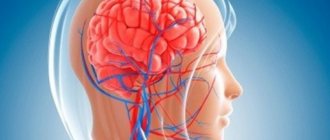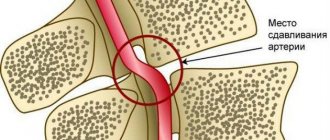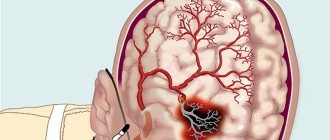Causes and symptoms of edema
The etiology of swelling on the legs and face is associated with the following reasons:
- genetic predisposition;
- allergic reactions;
- arrhythmia;
- obesity;
- varicose veins;
- hypotension;
- passive lifestyle;
- poor nutrition;
- severe heart disease;
- hormonal imbalance;
- lack of treatment for hypertension at an early stage of its manifestation;
- renal failure;
- drug, alcohol, nicotine addiction;
- uncontrolled use of certain medications;
- cirrhosis.
As you can see, there are quite a lot of reasons that provoke the formation of edema. They can develop as a result of thyrotoxicosis, coarctation of the aorta (congenital pathology), stenosis of the renal arteries, etc. Therefore, only an experienced specialist can determine the etiology of the appearance of edema in different parts of the body after conducting appropriate studies.
Symptoms
Swelling in arterial hypertension can manifest itself as the following symptoms:
- pain (discomfort) in the chest;
- increased sweating;
- feeling of pressure in the eyeballs;
- throbbing headache;
- chills;
- muscle weakness;
- dizziness;
- difficulty concentrating;
- vision problems;
- memory impairment;
- nausea;
- dyspnea;
- uneven pulse;
- chronic fatigue;
- periodic panic attacks;
- feeling of heaviness in the legs;
- insomnia;
- decreased amount of urine excreted;
- increased irritability;
- anxiety;
- swelling of the limbs and face;
- impaired coordination of movements (observed extremely rarely).
With facial swelling, patients often experience elevated levels of protein in their urine. In the initial stages of the disease, swelling on the face is detected only in the morning. Without adequate therapy, facial swelling does not go away within a day.
Advice.
If you experience the symptoms described above, consult a doctor immediately. If hypertension is not diagnosed in time and effective treatment is not prescribed, the disease will become chronic, which is fraught with the development of various kinds of complications.
Swelling of the legs - reasons why legs swell
Only 10% of patients require more intensive testing, including laboratory and imaging methods. Understanding the mechanism of edema development allows the doctor not only to make a correct diagnosis, but also to prescribe the correct treatment.
Treatment of chronic edema of the lower extremities is pursued not so much for cosmetic purposes as for ensuring the normal functioning of the skin and soft tissues.
The fact is that oxygen and other nutrients enter the skin by penetrating through the vascular wall and further to the skin itself. In conditions of edema, this mechanism does not work. A decrease in metabolic processes leads to starvation of the skin, accumulation of metabolic products in them, deterioration of the barrier function of the skin and a decrease in its regenerative abilities. Clinically, this is manifested by a violation of the color of the skin; it acquires a bluish tint, and also becomes denser. In addition, edema fluid, rich in proteins, serves as a good breeding ground for a variety of microorganisms that cause inflammation. Thus, this is a strong motivation to start treatment.
Reasons why leg swelling occurs
It is extremely difficult to identify any main reason. Mostly swelling of the legs occurs:
Leg swelling associated with varicose veins can occur on one or both legs. If varicose veins progress on one leg, the swelling is usually asymmetrical. Varicose edema is localized in the lower leg area (below the knee). The foot, as a rule, does not swell. A typical sign of varicose veins is that they go away or are significantly reduced after a night's rest. When a finger is pressed for a long time on the skin in the shin area (below the knee), characteristic dimples remain. Complaints can range from a simple feeling of heaviness from swelling to a feeling of dull arching pain. Upon examination, you can detect other manifestations of varicose veins: varicose veins and skin changes in the form of cyanosis, thickening, etc.
Lymphedema (Lymphostasis), in contrast to venous pathology, is manifested by swelling of the feet and fingers. Swelling of the dorsum of the foot is compared to a “pillow”, and the toes are compared to “sausages”. Lymphedema usually does not decrease after a night's rest. In the initial stages of the disease, pits remain on the skin of the lower leg from squeezing with fingers. Subsequently, as a result of the development of compaction of the skin, the soft tissues of the lower leg become dense like a shell. With lymphedema, the skin on the back of the foot (the back of the sole) cannot be folded. As a rule, there are no complaints. Sometimes patients feel a feeling of heaviness in their calves. Lymphedema most often affects one lower limb.
Diseases of the heart, kidneys, liver, endocrine system and long-term hormonal therapy cause systemic (central) edema, appearing on both lower extremities and localized on the lower leg. The swelling is symmetrical and does not involve the dorsum of the foot and toes. When squeezed with a finger, permanent pits remain. Patient complaints are related to the underlying disease. Unpleasant sensations in the legs are minimal or completely absent.
Positional (hypodynamic, orthostatic) edema is difficult to distinguish from systemic edema. The main differential diagnostic feature in such cases is the limited mobility of patients. Positional swelling of the legs often occurs in patients confined to wheelchairs. Externally, such swelling levels the conical profile of the lower leg and makes it look like a cylinder. The patients have no complaints.
Leg swelling associated with taking pharmacological drugs is always bilateral and symmetrical. The intensity of swelling may decrease after a night's rest or elevation of the limbs, and, as a rule, such swelling quickly disappears after stopping the drugs. There are no or minimal complaints.
Also, an increase in the volume of the lower extremities may be associated not with edema, but with a non-standard distribution of adipose tissue. This condition is called lipedema.
Lipedema is inherited and appears already in adolescence. Such legs are often compared to a “tree trunk,” noting the abnormally large thickness of the ankles. The feet remain completely normal. Night rest, prolonged compression and diuretics have no effect. The skin and subcutaneous tissue with lipedema, in contrast to true edema, have a loose consistency. Complaints are minimal; sometimes patients note increased sensitivity of the skin to touch.
Principles of treatment of venous and lymphatic edema
Of course, due to the variety of causes for the development of edema, there are a large number of treatment methods, but we will try to highlight the main areas. So, if your legs are swollen you need to:
- Compression elastic knitwear (allows you to influence swelling from the outside and help reduce it)
- Prescription of drugs that improve venous tone (by increasing the tone of the veins, fluid outflows from the legs faster).
- It is important to change your lifestyle and prescribe a diet.
- Correction of fluid levels in the body (limiting salt intake, taking diuretics, etc.).
- Various physical procedures (lymphopress, lymphatic drainage massage, magnetic therapy, etc.)
Expert opinion
The chief physician of the Clinic of Doctor Shishonin, Alexander Yuryevich Shishonin, notes that edematous phenomena in hypertension have different localizations. Swelling of the legs and face is most common.
As A.Yu. explains Shishonin, the main reason for the appearance of such edema is that the patient constantly increases the dose of drugs to lower blood pressure. At the same time, the work of the heart is disrupted, it begins to get tired, and ceases to perform its main functions. The brain does not receive enough oxygen, myocardial ischemia and brain hypoxia develop. In addition, stagnation and intoxication phenomena are observed.
Join the Club of Former Hypertensive Patients
, download gymnastics, which has already helped hundreds of thousands of people overcome pressure surges and hypertension. Get the most current and correct information about problems related to blood pressure, osteochondrosis, atherosclerosis, ask your questions to Dr. Shishonin and just communicate.
Most often, swelling is diagnosed in the legs. Without adequate treatment, the heart wears out over time and ceases to “hold” pressure. For some people, blood pressure drops to 90/60. It is very difficult to restore such a group of patients.
With swelling of the face, stagnation of intracranial blood is observed. This occurs due to the fact that cervical osteochondrosis compresses the vertebral veins so much that it disrupts the outflow of blood from the brain and increases intracranial pressure. This condition can be called cerebral edema because most patients die when diagnosed with cerebral edema.
Most experienced hypertensive patients have a swollen face and a pasty state. Swelling goes away quickly if the heart works normally. In order to force blood into the head, the heart must be very strong.
People with facial swelling are a group of patients who show positive dynamics towards recovery. Specialists of the Club of Former Hypertensives have developed a whole range of physical exercises that help optimize blood pressure and relieve the symptoms of hypertensive edema.
Dr. Shishonin’s physical exercises help unblock the deep muscles of the neck, correct the position of the vertebrae and improve blood circulation in the body. In severe cases, A.Yu. Shishonin recommends using drug therapy.
The doctor notes that most of his patients with facial swelling have vascular spots localized between the scalp and neck. If patients have such spots, headaches, or problems with blood pressure, then they can take Dr. Shishonin’s drug-free course.
Arterial hypertension and ischemic cerebrovascular accidents
L. A. Kalashnikova Professor, Doctor of Medical Sciences
Scientific Center for Neurology, Russian Academy of Medical Sciences
Arterial hypertension is one of the most common diseases. In Russia, about 40% of the adult population suffers from it. The danger of arterial hypertension is that it causes damage to the arteries of various organs, including the brain, which over time can lead to cerebrovascular accidents (CVA), both ischemic (cerebral infarction) and hemorrhagic (cerebral hemorrhage) . The insidiousness of arterial hypertension is that in some cases it is asymptomatic, not manifested by headaches or dizziness, as a result of which people often do not know that they have high blood pressure (BP) and do not take antihypertensive drugs. Sometimes in these cases they first learn about elevated blood pressure only after the development of cerebral urinary tract. Moreover, some people are aware of high blood pressure, but believe that there is no need to take antihypertensive drugs, since they feel satisfactory and do not suffer from headaches. Meanwhile, high blood pressure has a damaging effect on the walls of the arteries of the brain, changes in which over time can cause a stroke. It is also necessary to keep in mind that not only the absolute values of blood pressure are of great importance for damage to the arterial wall, but also the hemodynamic features of arterial hypertension: increased diastolic pressure, variability of systolic blood pressure, disruption of the circadian rhythm of blood pressure (absence of a physiological decrease in blood pressure at night or its increase , episodes of excessive nocturnal decrease in blood pressure). In connection with the latter, even moderate arterial hypertension requires timely correction, as it can lead to cerebral complications.
In arterial hypertension, small arteries (with a diameter of less than 500-800 microns) that supply blood to the deep parts of the cerebral hemispheres (white matter, internal capsule, subcortical ganglia) are predominantly affected. This selectivity of damage is due to the peculiarities of the anatomical structure of the arterial system, due to which it is the wall of small arteries in the deep regions of the brain that experiences the greatest pressure and undergoes the greatest destructive changes.
Damage to the cerebral arteries during arterial hypertension leads to the development of small deep-lying (lacunar) cerebral infarctions. Clinically, they are manifested by a special type of stroke - lacunar stroke. It has a number of distinctive clinical manifestations: preservation of consciousness in the acute period, absence of symptoms of damage to the cerebral cortex (disorders of speech, writing, etc.), good recovery of impaired functions over time. Lacunar infarctions are clearly visible on magnetic resonance imaging in the form of small, deeply located foci of ischemia no larger than 1 cm in size, rarely 1.5 cm. The further course of vascular pathology is determined by the prevalence of damage to the cerebral arteries and treatment tactics. If a person who has suffered a lacunar stroke does not have clinical symptoms of diffuse brain damage (decreased memory, bilateral increase in muscle tone, difficulty controlling pelvic functions) and there are no signs of diffuse brain damage on tomograms, then the prognosis is usually favorable provided that secondary medical treatment is performed. prevention. If the patient has clinical and tomographic signs of diffuse brain damage, then after suffering a lacunar stroke they most often gradually increase.
Arterial hypertension is the cause not only of acute ischemic cerebrovascular accidents (lacunar infarctions), but also of gradually progressive insufficiency of blood supply to the brain, leading to the formation of vascular (dyscirculatory) encephalopathy. Its development is associated with widespread damage (arteriolosclerosis) of arteries with a diameter of less than 150-200 microns, supplying blood to the white matter of the cerebral hemispheres and subcortical ganglia, which leads to their ischemia. Clinically, encephalopathy is manifested by cognitive impairment (primarily, memory loss), changes in gait (slowing, shuffling, unsteadiness), blurred speech, less commonly, choking when swallowing, difficulty controlling urination. The development of speech disorders of the aphasia type is uncharacteristic, since the cerebral cortex remains relatively intact, and the main changes are localized in the deeper parts of the cerebral hemispheres. Symptoms of encephalopathy may increase gradually or appear for the first time after a lacunar stroke. Neuroimaging - X-ray computed tomography or magnetic resonance imaging of the brain - is of great importance in the diagnosis of vascular (dyscirculatory) encephalopathy. It reveals diffuse changes in the white matter of the cerebral hemispheres (termed “leukoaraiosis”), small lacunar infarctions (often asymptomatic), and dilation of the cerebral ventricles. In everyday life, patients with dyscirculatory encephalopathy are often interpreted as suffering from sclerosis, although they are not characterized by atherosclerotic lesions of the main arteries of the head with occlusion or severe stenosis of their lumen.
Primary and secondary prevention of acute and chronic progressive vascular diseases of the brain in arterial hypertension consists of timely detection of elevated blood pressure and its correction. For this purpose, various groups of antihypertensive drugs are used: inhibitors of angiotensin-converting enzyme and its receptors, calcium channel blockers, diuretics, beta blockers, alpha blockers. It must be borne in mind that one should not reduce blood pressure below the “working” level, since in conditions of a narrowed lumen of intracerebral arteries (arteriolosclerosis), this can increase cerebral ischemia through the mechanism of cerebrovascular insufficiency and lead to an increase in focal neurological symptoms, the appearance of general weakness and dizziness. Patients also need to be prescribed complex drugs that improve blood circulation and nutrition of the brain (Cavinton, etc.), and drugs that improve the rheological properties of the blood, since with arterial hypertension there are pronounced circulatory disorders in the small vessels of the brain.
The effectiveness of drugs that normalize blood circulation in brain tissue has been confirmed by numerous studies. For decades, doctors around the world have been using them to reduce complications of vascular diseases. In order for the drugs to have maximum effect, it is necessary to exclude the influence of negative factors. Smoking, excessive alcohol consumption, foods rich in cholesterol, increased mental stress - all this negatively affects the condition of blood vessels.
For hypertensive encephalopathy, the drug Cavinton is prescribed, which has a complex effect. It helps normalize vascular tone, ensures blood delivery to areas of the brain with insufficient blood circulation, improves blood fluidity, as well as nutrition and energy supply to the brain in conditions of insufficient blood circulation by increasing the delivery and absorption of glucose and oxygen by nerve cells - substances necessary for their normal functioning . A lack of these substances can lead to the death of neurons responsible for memory and thinking. The consequence of this is a progressive weakening of memory and attention. Course use of Cavinton and Cavinton forte in the form of solution and tablets in this category of patients is accompanied by restoration of memory functions, positive changes in the emotional-volitional sphere, reduction of weakness, dizziness, and unsteady gait. During a course of treatment with Cavinton, a noticeable improvement in physical, mental and social functions and quality of life is achieved.
One of the important aspects of the treatment of cerebrovascular disorders in patients with arterial hypertension is the treatment of headaches. It should be noted that it is not always associated with an increase in blood pressure, but may be due to a decrease in cerebral vascular tone, which responds well to treatment with Cavinton Forte. In case of cerebrovascular insufficiency, including arterial hypertension, Cavinton Forte is taken 1 tablet 3 times a day after meals, for 3 months, with a repeat course of treatment after six months. Antidepressants can help with so-called “tension headaches.”
Timely detection, comprehensive treatment, regular monitoring and normalization of blood pressure, correction of cerebrovascular insufficiency in arterial hypertension are the key to preventing such serious complications as stroke and cerebral infarction.
Prevention of edema
To prevent the development of edematous phenomena, you need to follow some recommendations from your doctor:
- consume less salt in your diet;
- monitor your weight;
- avoid excessive physical activity;
- spend more time in the fresh air;
- include more fruits and vegetables in your diet.










